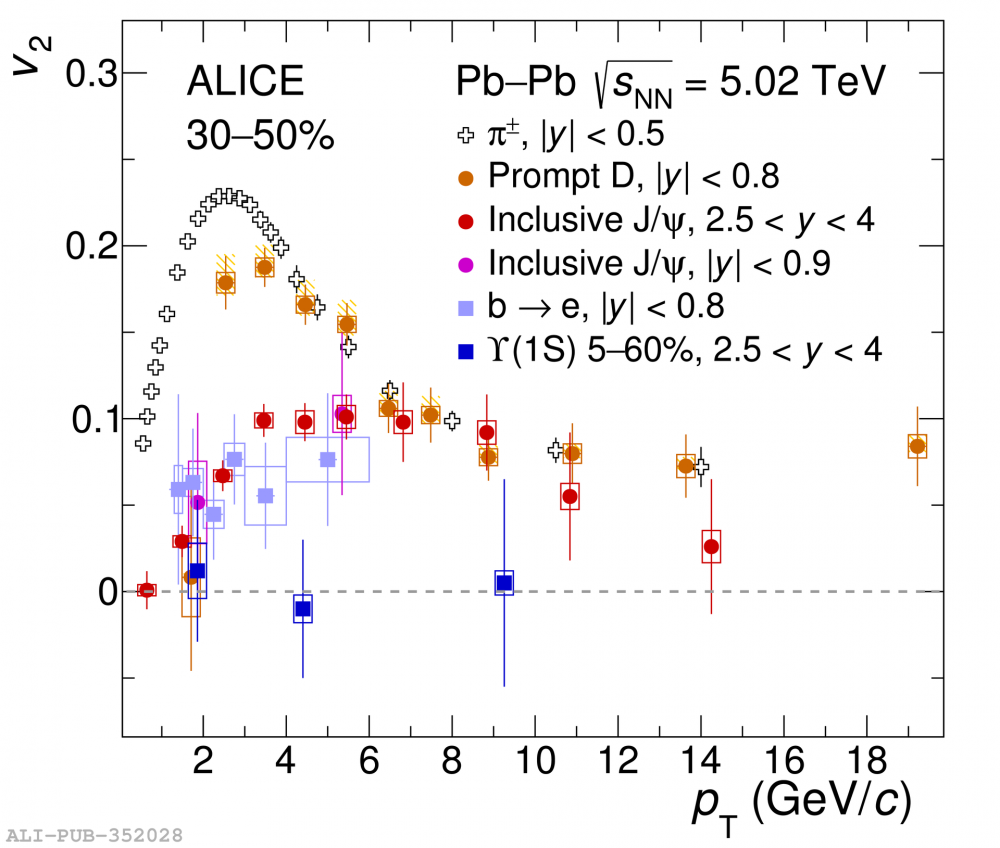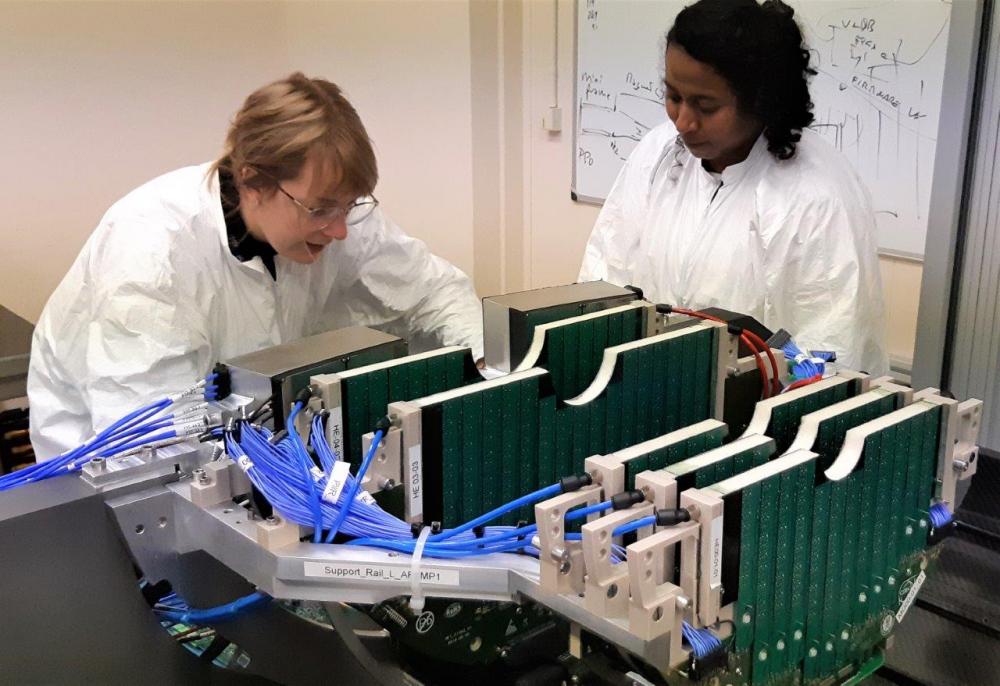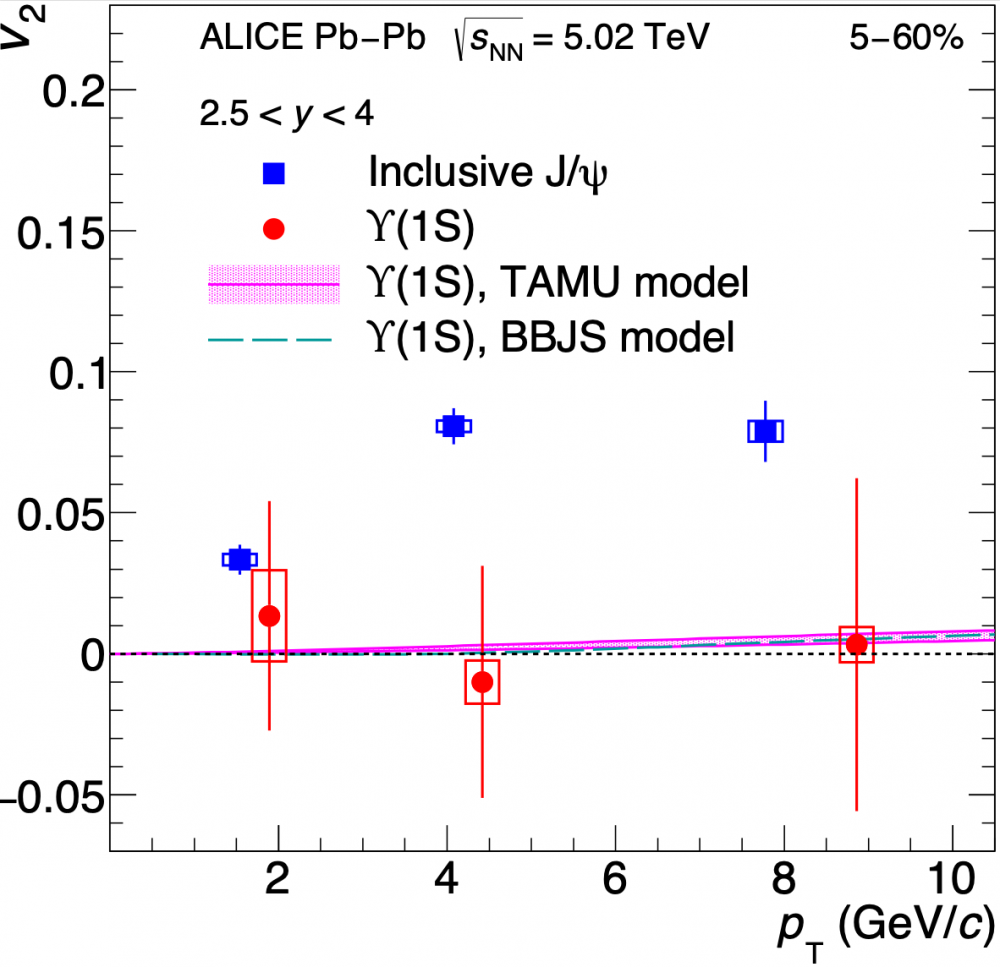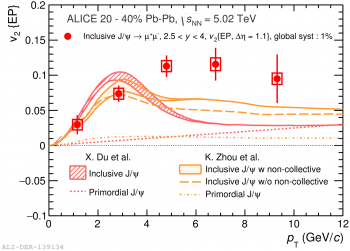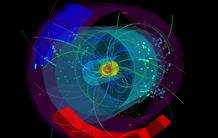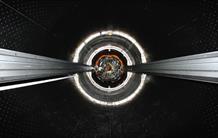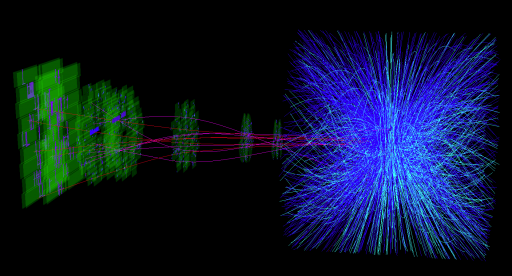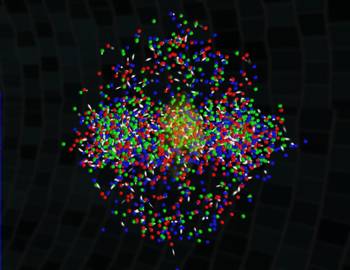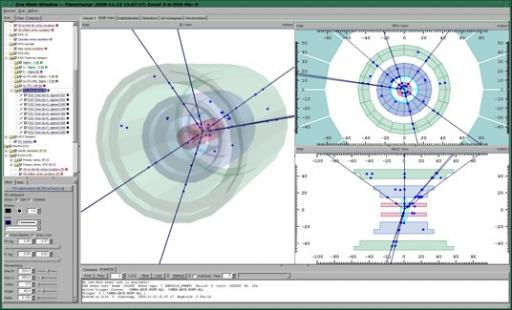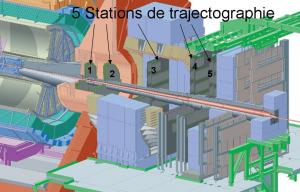The 2020 edition of the Large Hadron Collider Physics Conference (LHCP) took place from 25 to 30 May 2020. Due to the COVID-19 pandemic, the conference, originally planned to be hosted in Paris, was held entirely online. The ALICE collaboration presented new results showing how charmed particles - those containing quarks, the elementary components of matter, known as c - can act as "messengers" for the plasma of quarks and gluons, which is believed to have existed in the primordial Universe and can be recreated during heavy ion collisions in the Large Hadron Collider (LHC). By studying the charmed particles, scientists can learn more about hadrons, particles in which quarks are bound together by gluons, and about quark-gluon plasma, a state of matter in which quarks and gluons are not confined within hadrons. These new results are the result of an analysis conducted as part of a thesis currently underway at the DPhN.
After more than four years of research and development, design and manufacturing work, the MFT (Muon Forward Tracker), a new detector that will equip the ALICE experiment at the LHC, has seen its construction finalized and is currently under commissioning at CERN. In order to limit as far as possible the amount of material crossed by the particles, the conception of this detector has required the development of many innovative techniques and procedures, particularly in the integration of silicon sensors on flexible hybrid circuits called ladders, for which Irfu was responsible within the project. It took two years to manufacture the 500 ladders of the MFT, and a very long sequence of operations was the subject of numerous studies under the responsibility of the Irfu Antenna team at CERN. The production of these ladders has just been successfully completed and it is therefore time to make a short assessment
A few microseconds after the Big Bang the Univers may have gone through a deconfined state of quarks and gluons, the Quark–Gluon Plasma (QGP). The QGP can be recreated in high-energy heavy-ion collisions. In particular at the LHC at CERN, the QGP behaves like a fluid. All particles, light, strange, or charmed flow collectively as if being carried by the same fluid, proving the strength of the interactions between QGP constituents. The ALICE Collaboration at the LHC, with decisive contributions from the Irfu teams, has just published, in the prestigious Physical Review Letters journal, the first measurement of the elliptic flow of Υ(1S) (a particle composed of a beauty quark and its antiquark). This resonance appears as the first particle at the LHC not flowing with the fluid. This pioneering result opens up the path for deeper studies of the QGP.
In ultra-relativistic heavy ion collisions at CERN's LHC accelerator, a new state of matter is formed: the quark-gluon plasma (QGP). It is a kind of very dense and hot "soup" containing only the most elementary constituents of matter. A few microseconds after the Big Bang, the Universe would have passed through this state. Because of the interactions between its constituents, the QGP flows like a fluid. At the LHC, interactions between constituents of the QGP are so strong that even objects as massive as the charmed quarks are carried away by this flow, as suggested by the measurement of the flow of the J/ψ (particle composed of a charm quark and its antiparticle) of ALICE during the first campaign of the LHC (see highlight 2013). This result has just been confirmed by the ALICE collaboration using data from the new LHC campaign (2015-2018). The precision obtained suggest the need of including new mechanisms in the theoretical models. The Saclay group played a key role in analyzing this data.
According to the ALICE collaboration at LHC (CERN), certain rare proton collisions have properties that are similar to those of a quark–gluon plasma. In the past, these properties had been observed for collisions of heavy nuclei only. The physicists are now confronted with a new enigma: how can a state of quark–gluon plasma emerge in a system as "small" as that generated by a collision between two protons?
A team from IRFU, a member of the ALICE collaboration at CERN, has coordinated the analysis of J/ψ particles produced during lead-lead collisions at the LHC (CERN). Their results provide a solid indication of the existence of a quark–gluon plasma.
Le Large Hadron Collider (LHC) au CERN a récemment mené à bien le programme de collisions de protons sur des noyaux de plomb. C’est à dessein que cette catégorie de collisions a été choisie, car elle permet d’étudier comment l’environnement nucléaire perturbe la structure interne d’un nucléon individuel donné dans le noyau de plomb. Ces effets nucléaires dits « froids » ont déjà été étudiés dans le passé. La grande nouveauté vient du bond en énergie du LHC qui était très attendu. Il permet en effet de tester notre compréhension à très haute énergie de ces effets. Une particule-sonde, le J/psi, a été privilégiée par les expériences ALICE et LHCb installées auprès du LHC. La production du J/psi y a été mesurée et est confrontée avec succès à l’extrapolation à haute énergie de notre modèle théorique. Le SPhN a activement contribué à la fois à la mesure du taux de production du J/psi en collisions proton-plomb et à l’élaboration de ce modèle.
After almost a year collecting data from proton-proton collisions, the LHC at CERN began the injection of lead ions at the beginning of November, with the first collisions obtained on November 8. The energy in the nucleon-nucleon center of mass is 2.76 TeV, around ten times greater than that achieved previously by the RHIC in Brookhaven USA. The first results from ALICE have been made available without delay.
The Phenix and Star collaborations, which include physicists from CEA-IRFU and CNRS-IN2P3, have announced major discoveries on the nature of the quark-gluon plasma. These conclusive results, which advance our understanding of nuclear material subjected to extreme conditions, shed new light on the birth of the universe. They have been published in the journal Physical Review Letters.
Monday, 23 November 2009, marked the first particle beam collision inside the large detectors of the LHC. ALICE saw its first collisions at an energy of 900 GeV, enabling it to check for correct operation of the 18 large detectors which comprise it. Since 27 November, with just a few days worth of data, the collaboration has even published an article confirming some existing measurements. The group from the IRFU, who are responsible for the dimuon arms, had to await more stable beam conditions in order to see their detectors reacting to the data coming from the collisions and, on 6 December, all the gaseous detectors were able to be powered up. The traces from the first muons could be successfully reconstructed, to the great satisfaction to all the team. They are now eager to begin collecting more data after the planned restart in February 2010.
At the end of March 2009, the ALICE Muon Spectrometer took cosmic rays over a period of two weeks. The ALICE group at Saclay2 was closely involved in the design, development, construction and installation of a part of the chambers of this Spectrometer3. The purpose of the cosmic ray test was to check the performance of the entire system, from acquisition to reconstruction of the data. The acquisition system readout about a million channels and the data was recorded on the computing grid. Almost 15,000 tracks were reconstructed under conditions close to those of the real experiment. The cosmic test was a success, demonstrating the performance and the stability of the spectrometer chambers. It also revealed some weak points of the system. Tests are currently underway to correct the observed defaults.
Another cosmic test is planned for August, a few weeks before the first LHC beam injections, involving all ALICE detectors.
Contacts:

